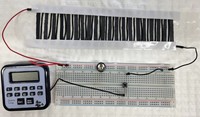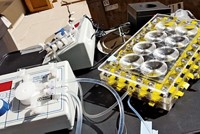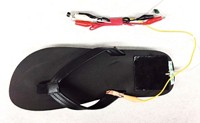Advertisement
Grab your lab coat. Let's get started
Welcome!
Welcome!
Create an account below to get 6 C&EN articles per month, receive newsletters and more - all free.
It seems this is your first time logging in online. Please enter the following information to continue.
As an ACS member you automatically get access to this site. All we need is few more details to create your reading experience.
Not you? Sign in with a different account.
Not you? Sign in with a different account.
ERROR 1
ERROR 1
ERROR 2
ERROR 2
ERROR 2
ERROR 2
ERROR 2
Password and Confirm password must match.
If you have an ACS member number, please enter it here so we can link this account to your membership. (optional)
ERROR 2
ACS values your privacy. By submitting your information, you are gaining access to C&EN and subscribing to our weekly newsletter. We use the information you provide to make your reading experience better, and we will never sell your data to third party members.
Energy
Solar device desalinates water efficiently
Thermal insulator boosts performance by protecting the device’s sunlight absorber from heat loss
by Elizabeth K. Wilson
December 5, 2016
| A version of this story appeared in
Volume 94, Issue 48

A new solar-powered device that takes the salt and minerals out of saltwater works at a higher efficiency than other similar devices (Proc. Nat. Acad. Sci. 2016, DOI: 10.1073/pnas.1613031113). This type of portable, solar-based technology could be a boon for those living in remote areas without clean drinking water.
Scientists are devoting much attention to the development of solar-powered desalination devices because traditional methods for removing salt from saltwater are based on reverse osmosis and use large amounts of energy. Typical solar-powered desalinators aren’t very efficient—often only 30 to 45% of the energy they take in from sunlight results in water vapor generation. This is in part because their solar absorbers, which heat water to evaporation, are in direct contact with the bulk saltwater, which sucks away large amounts of the heat. To mitigate this energy loss, solar desalinators often require additional heat input from external thermal sources or extra help from optical sunlight concentrators.
Now, Jia Zhu, Xiuqiang Li, Weichao Xu, and colleagues at the University of Nanjing have developed a device that employs a thermal insulator. A folded graphene oxide absorber sits on top of the polystyrene foam insulator, which in turn floats on the bulk saltwater. Water from the bulk solution gets taken up by two-dimensional channels in a cellulose film that’s wrapped around the insulator before making contact with the heated absorber. The insulator keeps heat from dissipating into the bulk water. The device has an efficiency of 80%.





Join the conversation
Contact the reporter
Submit a Letter to the Editor for publication
Engage with us on Twitter